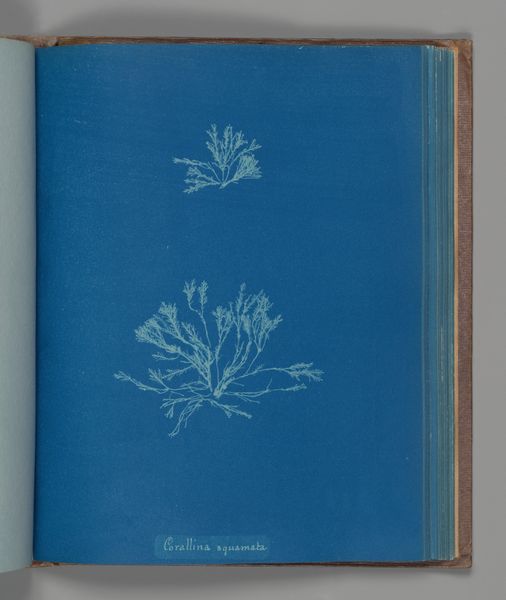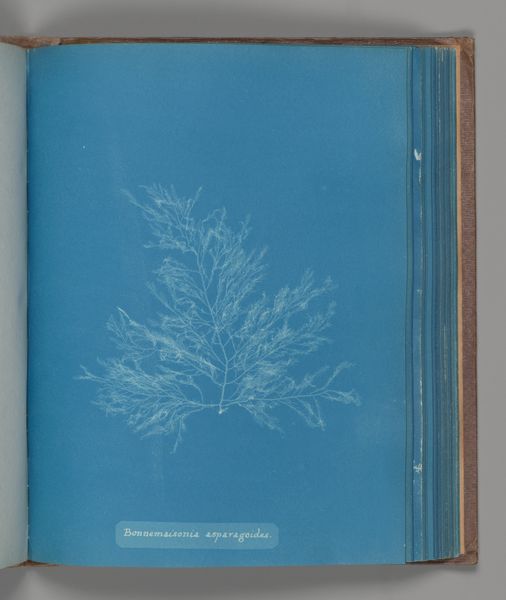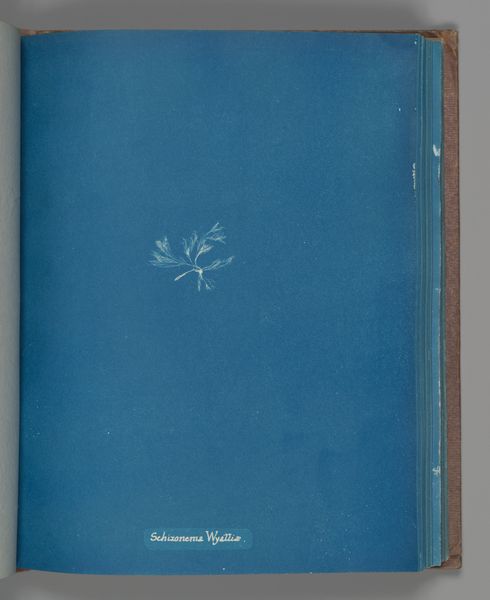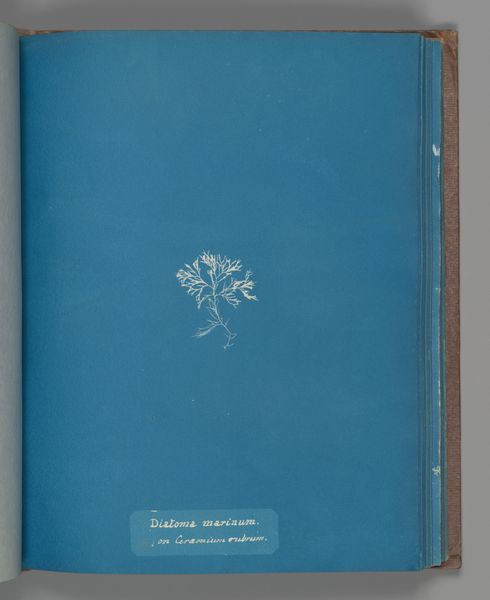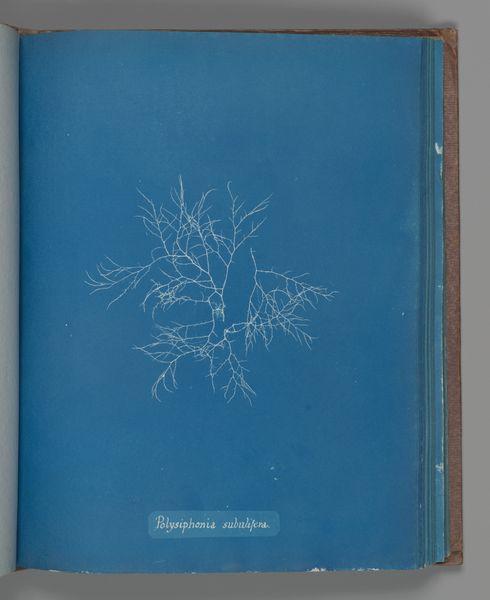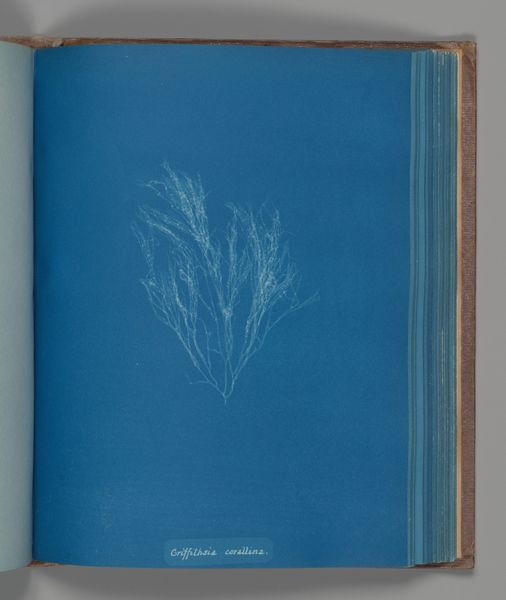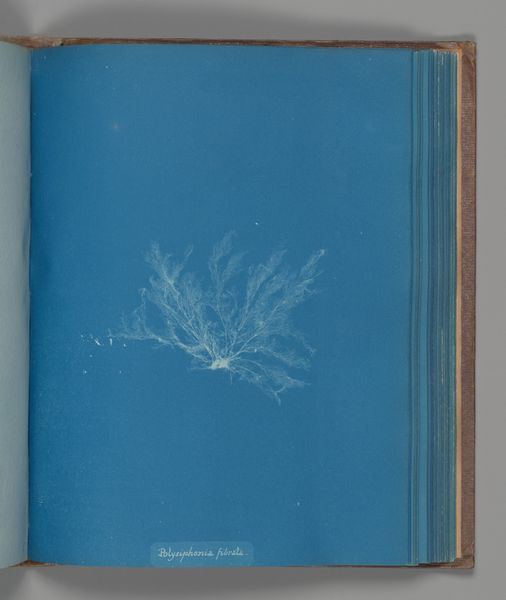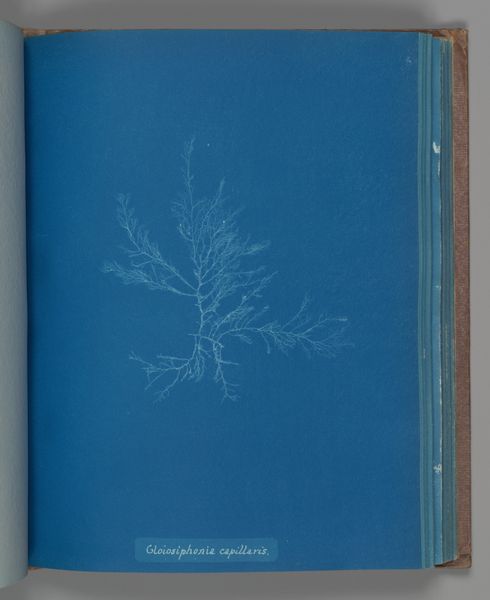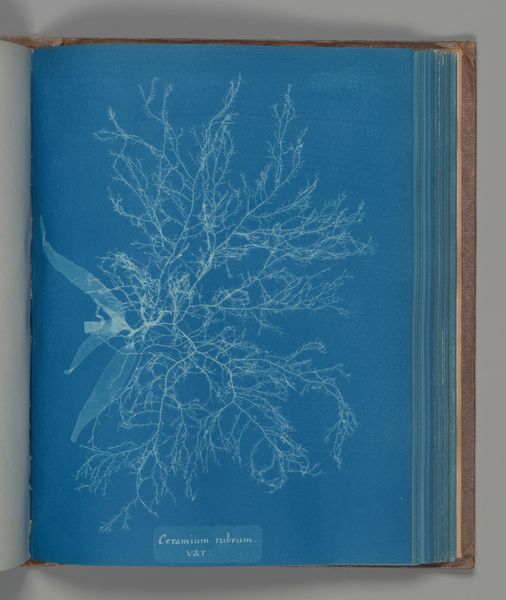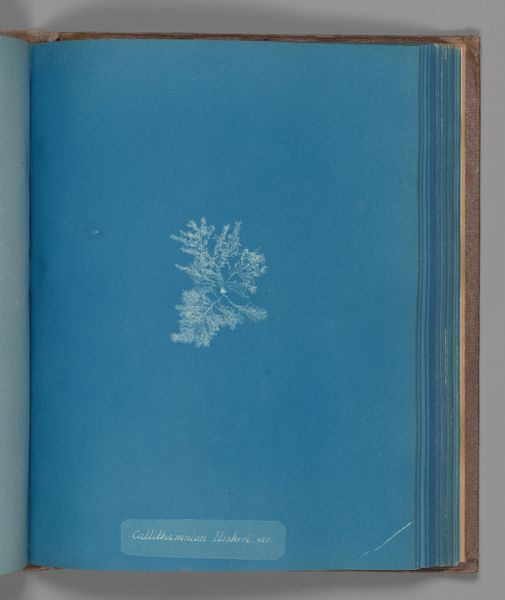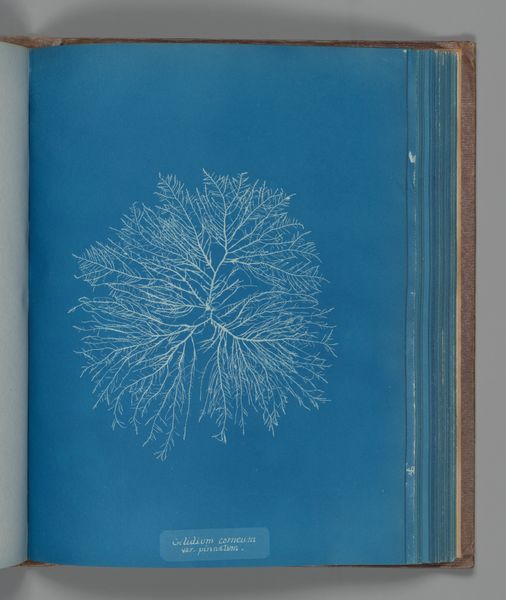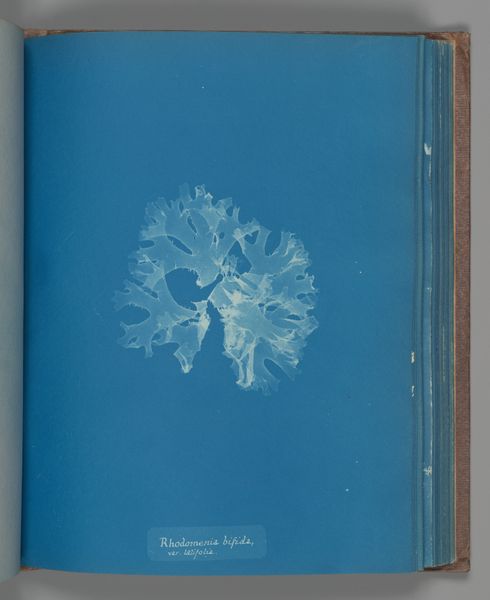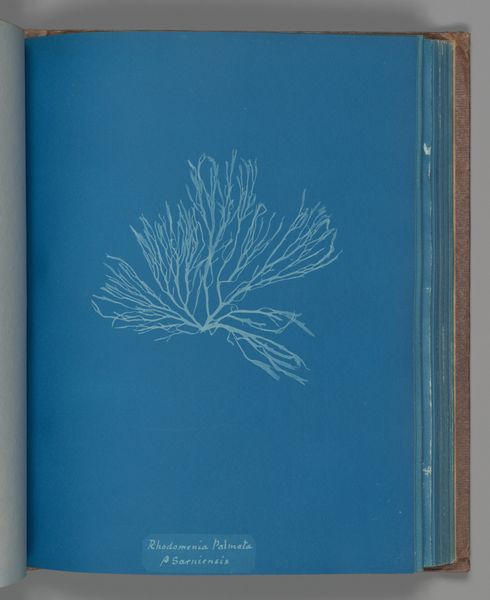
Dimensions: Image: 25.3 x 20 cm (9 15/16 x 7 7/8 in.)
Copyright: Public Domain
Anna Atkins made this cyanotype of Grateloupia filicina in the mid-19th century. A botanist by training, Atkins took up photography as a means of scientific documentation, using the cyanotype process to create detailed studies of algae. In Britain, the 1840s saw the expansion of scientific societies. Photography emerged as a tool for standardizing visual data. Atkins was among the first to recognize its potential. Her photograms were groundbreaking for their combination of scientific precision and aesthetic sensibility. Through direct contact with specimens, she captured intricate details, revealing the beauty and complexity of the natural world. By exploring the intersection of art and science, Atkins challenged the prevailing norms of artistic practice in the 19th century. Her photographs invite us to consider the relationship between human knowledge, technological innovation, and the environment. By consulting archives, correspondence, and scientific publications, we gain insights into the cultural context in which the photograph was made.
Comments
No comments
Be the first to comment and join the conversation on the ultimate creative platform.
